
Downtown Saint Louis used to be mainly a ghost town in the evenings, except for the nights when there happened to be a ball game, but that has changed: the latest real estate boom led to numerous loft apartments in former industrial buildings dating from the late 19th and early 20th centuries.
Downtown still has numerous Catholic churches. The new Loft District is served by Saint Patrick's to the east and Saint Nicholas to the west, as well as several other churches within walking distance, including Saint John Apostle and Evangelist, Saint Joseph Shrine, and the Basilica of Saint Louis, King of France.
As I was taking this photograph, a group of about six young women, who all claimed to be professional photographers, stopped me and proceeded to laughingly criticize my technique. Their sole male companion attempted to sell me a T-shirt.
The Gateway Arch.
The road ends in a flood, and Wharf Street is underwater.
Taken from the Metrolink subway station inside of Eads Bridge.
Laclede's Landing is a small entertainment district redeveloped in the 1970s from a decaying industrial area. The historical buildings here are dwindling in number, as the empty lot in the foreground testifies. A precious small section of the original Saint Louis street-grid exists in this area, the bulk of the original city having been destroyed to make room for the Arch.


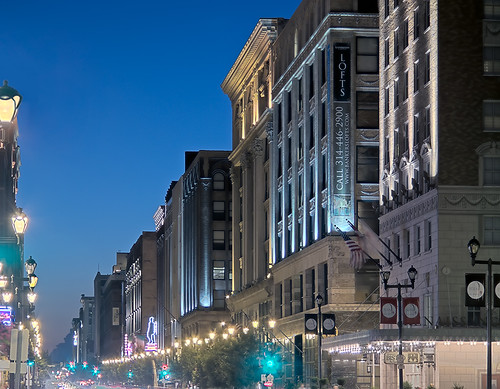
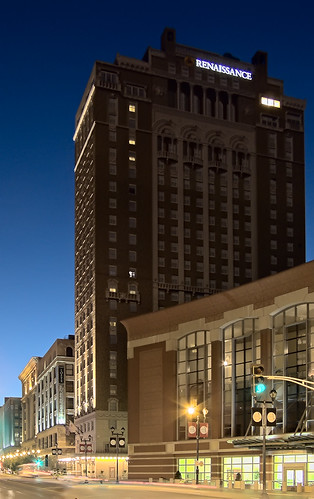
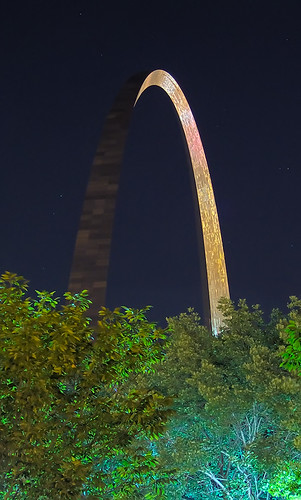
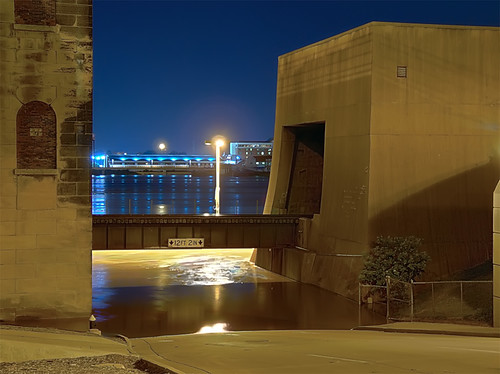
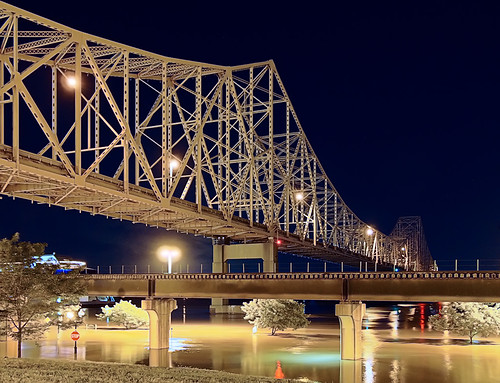
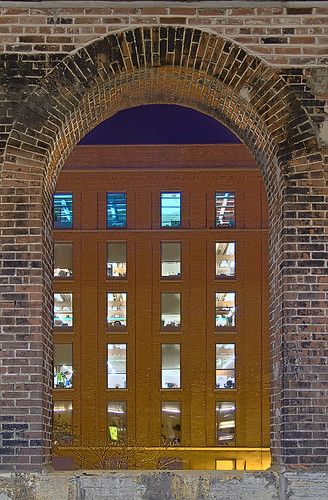
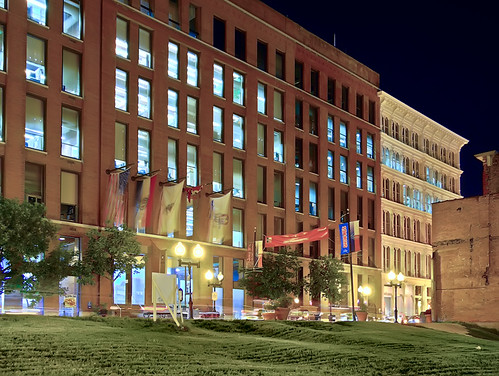
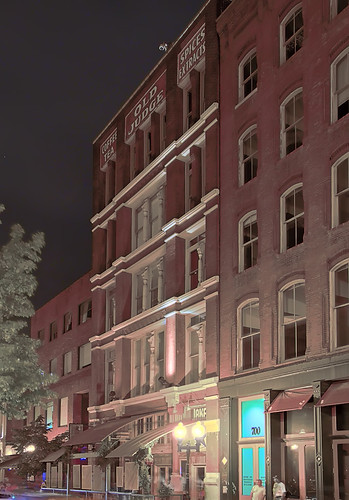
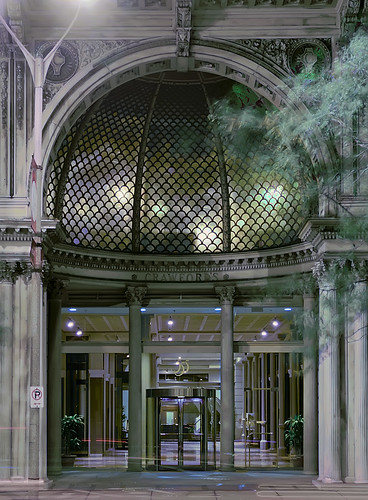

Mark I appreciate your link back to the 1932 arial photo...I never realized that there had been so much city closer to the river...I am sure the Arch building and flood control measures by the Corp had much to do with the removal of many buildings.
ReplyDeleteMark what street are you looking down in the picture with all of the green stops lights shining?
ReplyDeleteA tremendous amount of the city was destroyed in the mid-20th century, for the sake of modernization, progress, and social engineering. The Modern project, it seems, wanted to erase the vestiges of history, and was very successful at that.
ReplyDeleteOne goal was the destruction of historic neighborhoods, and relocating its inhabitants into high-rise buildings. The failure of the northside Pruitt-Igoe high-rise housing project is often cited internationally as a symbol of the end of pure modernism.
Interest in historic preservation revived in the early 1970s, and the Laclede's Landing, Soulard, Lafayette Square, Saint Joseph Shrine, and Central West End redevelopments were prominent local preservation projects.
The street you mentioned is Washington Avenue, looking west, and the photo was taken near the Convention Center. This was originally a street lined with wealthy homes, but industry started taking over in the 1870s: this became the garment district with many clothing factories and warehouses, but industry closed down by the 1960s. Redevelopment has been planned for decades, and has recently borne fruit. However, this is probably not a neighborhood where you could raise a family!
Couldn't afford it either!
ReplyDeleteMark, have you corrected your technique??????
I'm always correcting my technique!
ReplyDeleteBut the girls did mention that they all did mainly portrait photography, and so really couldn't judge.
Terrific shots. Are they also on Flickr?
ReplyDeleteSee:
http://bits.blogs.nytimes.com/2008/07/08/great-photo-on-flickr-getty-images-might-pay-you-for-it/
Yes, these photos are hosted on Flickr.
ReplyDeleteMark...regarding the T shirt sale???
ReplyDeleteWas it a panhandle attempt?
That is one thing that bothers me about downtown STL. It may be my immagination but I witness or am a target for this more there than Chicago?
Apropos Puma's comment on the 1932 aerial photo:
ReplyDeleteThose closely packed old buildings between the courthouse and the river were pretty grungy even in the 40's. Now they have been replaced by exemplary examples of 70's architectural art -- right?
Puma,
ReplyDeleteThe attempted T shirt sale was not a panhandle attempt; he was just very eager.
Panhandling is extremely common in Saint Louis, and not just in the city. As I haven't been to Chicago in years, I don't know how it compares. The typical panhandle story is that the person needs money to get home, either for bus fare or gas.
There are, I think, at least two homeless shelters in downtown. Since the City has such a high violent crime rate, the local police don't spend much time on enforcing such minor matters. As Christians perhaps we shouldn't be too offended by panhandling attempts, for doesn't the Church teach that Christ Himself is present in the sick and poor, and that what we do for them we do for Him?
An old friend of mine used to manage a homeless shelter, and told me that roughly 1/3 of the homeless are mentally ill; another third have been hit by economic disaster, such as losing a job while simultaneously having to pay expensive medical bills, while the final third are homeless out of choice.
Irene,
The old buildings were so dangerous and seedy that even in the late 19th century, the Archbishop abandoned the Old Cathedral due to the danger of the neighborhood, and for 20 years made Saint John's his pro-cathedral. I think that they started clearing the land there in the 1930s.
The Arch, which occupies the former city waterfront district, was designed in the 1940s, and was completed in 1966.
Mark, the seediness/grunginess of the old buildings is conceded. What my sarcasm was directed towards is the tastelessness of their replacements, and the loss of history.
ReplyDeleteIrene,
ReplyDeleteI agree, but I have a poorly-tuned sarcasm detector.
Back in those days, history was an embarrassment, and even history lovers felt an inevitability towards Modernism.